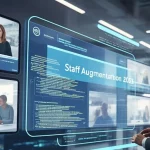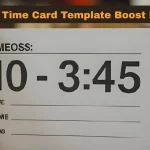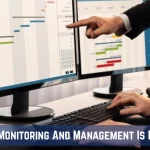Communication is how we form and maintain relationships, not just in our personal lives but also with coworkers, partners, and customers in the workplace. Team members may build strong relationships and positively contribute to the corporate culture and overall growth when they communicate effectively.
Communication breakdowns may take many different forms, ranging from a lack of information flow to overtly hostile encounters and everything in between. Departments typically focus only on their responsibilities and objectives, losing sight of “the broad picture” and missing possibilities that can only achieve via teamwork.
Given these advantages, it is simple to agree that workplace cooperation is essential. However, attaining these results might be challenging.
For a long time, one of the main worries for a successful organization has been inadequate communication. It is also beneficial to understand what team communication entails. Why is good communication so important- how to improve team communication – how can we encourage pleasant dialogue on both sides?
What exactly is a Team Communication Plan, and Why is it Necessary?
A team communication plan is a method for sharing information, engaging people, creating a productive atmosphere inside your business, and accompanying coworkers. To develop an effective communication plan, you must be involved in every moving component of your business that contributes to successful internal interactions between corporate departments, managers, workers, and others.
It makes excellent financial sense to have effective staff communication. It will be hard to have a highly committed and well-performing team if your employees have difficulty communicating effectively. Strong communication also fosters community and advances your company’s culture. The only way to accomplish this is to develop an effective communication plan for the team.
The Four Communication Methods-
- Communication (Voice)
The most frequent type of communication utilized by teams inside businesses is verbal communication. It is a technique of communication in which information conducts vocally. The person acting as the source sends information by saying words or producing sound patterns, Although the person at the receiving end must listen to the words – or sound to obtain the information.
The efficacy of verbal communication determines several elements, including voice clarity, tone, word choice, speech rate, etc. Furthermore, listening abilities play a significant role in determining the overall success of verbal communication.
- Communication Through Nonverbal Means
Nonverbal communication entails conveying information through gestures, postures, and facial expressions. Body language, eye contact, and other visual cues to employ to communicate information. One thing to keep in mind with nonverbal communication is that it might occur accidentally. For example, not looking at the individual who expresses an idea with you most often indicates that you are either uninterested in the concept or disagree with it.
- Communication in Writing
Printed communication is another way that implements by the team to communicate information in the form of words or symbols written on paper or by email. To comprehend the message or data, the person who wants to convey it must note it on paper or send it by mail, and the one receiving it must read it. The benefit of written communication is that it offers a record of information – that can be accessed and reviewed numerous times.
When it comes to written information, the value of words cannot enhance. Unlike verbal communication, the person receiving the message cannot detect the feelings of the person composing the message. As a result, the tone of writing and word choice is critical to ensuring that the reader receives the correct information.
- Communication Through Visuals
Signs, drawings, illustrations, graphics, photographs, and other forms of visual communication uses to convey information and messages. Individuals may find it simpler to comprehend information if the proper vision of components is to use. You can use visual elements in both verbal and written communication to make information more transparent. During team meetings, visual communication is most often spoken and textual information.
As An Employee- Here Are 05 Ways To Provide Effective Team Communication
Give Coffee Breaks A Meaning-
Keeping with the team-building theme, a coffee break for all employees allows everyone to mingle informally while still at work. Coffee is the fuel that most people need to get through the day, so why not make it pleasant and productive at the same time? According to research, whether work-related or not- good communication among coworkers and stimulates by exchanging ideas.
Communicate Openly and Honestly with your Team Members-
Instilling trust in your team members is maybe the single most effective technique to increase interpersonal communication in the workplace. Transparency is essential here; if team members believe secrets are unseen from them, the trust you have created will be. Of course, sensitive information should be overseeing later, but team members have a right to know when such information is not available to them. Communicate openly and honestly with your team members, and reassure them that they can do the same with you. Mutual trust is the cornerstone of any relationship, professional or otherwise.
Treat People Equally-
You may like to interact orally and think that others do as well- but they prefer to connect through texting. Alternatively, you may like to work in near-silence for eight hours, although others want a few talks to break up the monotony.
Check in with your coworkers to determine their preferred manner and methods of communication for everything from brainstorming to the final result. Then, from there, you may develop your communication.
Be Vulnerable-
Sometimes, a company’s incompetence communicates well since the prohibition sends enough information. And finally, uninvolved since they had never actually discussed it. If they continue to have that problem and wish to fix it, it may be time to extend an olive branch and begin the dialogue.
It necessitates a certain amount of assurance (and the ability to be vulnerable). As amusing as it may sound, breaking the norm uniformed in this tiny manner may be difficult. However, if someone is bold enough to strike up a discussion and share with your coworkers, you’re more likely to develop an impactful, trustworthy, and communicative connection.
Incorporate Reflective Listening-
Reflective listening is a must-have communication approach with a significant influence on comprehension. Here’s how to put it to use:
- Pay close attention.
- Consider the significance of what the speaker stated to you.
- In your own words, repeat what gives utterance. Check to see whether you have understood correctly.
- Using the same procedure, clarify as required.
Team communication is a two-way street, so let’s look at ways employers can help.
Also read:
05 WAYS TO INSTIL FUN AND POSITIVITY IN YOUR TEAM MEETINGS
06 TIPS FOR CREATING A FEEDBACK CULTURE FOR REMOTE WORKERS
Employers Can Provide These 07 Benefits to Improve Communication
Productive Meetings-
Meetings are unproductive and inefficient, according to 71 percent of top managers polled- according to research. Let’s make things clear by aligning group goals and enhance team productivity. Meetings should be no different if every encounter must have a transparent aim. Try the following suggestions to keep your conference on track:
- Keep meetings brief. Limit them to 50 minutes or less to give participants time to regroup afterward.
- Only invite team members who must attend.
- Make a comprehensive schedule and distribute it to all attendees before the meeting begins.
- Communicate when and how you will conduct the meetings, whether in a specific room or via a team communication app.
- Assign a meeting leader to moderate the discussion.
- During the meeting, adhere to the plan.
- Include non-agenda topics addressed at the assembly on your next consultation agenda.
- Schedule the next tweetup after your meetings
Acknowledge Achievements-
It is critical for a manager or team leader to maintain good morale and motivation. By publicly acknowledging individual and team accomplishments, you demonstrate that you are aware of and concerned about your team’s performance. Recognition for success may improve performance and increase productivity.
Bring the Team Together Regularly-
Planning time for everyone to come together is one of the most significant things a remote team can do. Bonding time (online or in-person, depending on whether or if the detached team visits the office space) is an excellent method to build communication and trust. It aids in broad ways, including bringing team members closer together and encouraging everyone to share. Improve their understanding of each other’s personalities and communication styles, and assist them in discovering shared interests that they would not uncover on a business call usually.
If you can spend time together in person, you may also plan getaways for the remote staff to come together regularly. Encourage mini-retreats- if you have employees from all over the world and some of them live near each other. Most essential, ensure that the team meets electronically regularly. And don’t make everything about work!
Have a brief 10-minute check-in video conference with your staff now and then to see how they’re doing- and whatever they are up to, as well as to catch up. It does not entirely replace in-person communication, but it is a simple method to interact with the rest of the team.
By Conveying your Message Clearly, you may Define Goals and Expectations-
Managers must provide clear, attainable goals to both teams and individuals, describing what you expect on any particular project and ensuring that all employees are aware of the project’s, the department’s, and the organization’s overall objectives. As a result, ensure that your message is clear and understandable to your intended audience. To do this, you must communicate clearly and respectfully, conveying your point without generating confusion or offense.
Setting Achievable Goals-
When a firm develops goal-oriented communication and promotes openness, all employees unite toward the same purpose. As a result, to facilitate the work process, you should clearly express the aim.
Make Your Collaboration Software More Efficient-
Collaboration software intends to improve how teams collaborate. With so many new applications and team communication tools on the market, it’s tempting to test them all. Better tools = more collaboration- right?
Not at all! Such a tool specializes in several areas, and switching back and forth between them might stymie team communication.
Believe it or not, if you locate the right one, most projects can be completed with remote desktop control, scheduled screenshots, activity monitoring, and time tracking. The good news is that many corporate software packages contain these features. Employee monitoring software like Empmonitor may help you manage projects more efficiently by breaking down workflows, coordinating tasks and progress, and more.
Here’s how Empmonitor can help you monitor your staff by taking a screenshot:
- Log in to your EmpMonitor dashboard using your login information.
- Employee General settings, tracking features, employee screen monitoring, screenshots, automatic updates, and employee tracking time are all available.
- You may now adjust all of the monitoring features to your liking. All you have to do is click on the settings button.
- Navigate to the settings. Select Monitoring Control. Then select the Create Group option.
- Enter the name of the group. And then fill in the rest of the information before clicking the Create Group button.
- Click on the options tab to modify the monitoring features.
- Set the screenshot frequency based on your tracking requirements.
- You may also tailor employees’ time monitoring based on their network.
- After you’ve customized the employee monitoring settings, click the Save button.
Display Respect-
Respect is a necessary element for efficient team communication. Communication respect may be as simple as respecting your team’s time and making communication effective and streamlined. Respectfully offered and received constructive feedback is also required. There may be moments when team members make mistakes, but maintaining polite talk can be the difference between a quick fix and a total derailment.
Together, We Must Listen and Build
Team communication is a part of work-life, especially in the place- where collaboration, technology, and remote work are a part frequently. Firm communication methods and connections are required for growth, achieve deadlines, and surpass goals. As a result, maintaining lines of communication open and functioning correctly amongst groups is a difficulty that all organizations encounter. Fostering a team environment and emphasizing excellent communication among employees and between employees and management can gravel its way to success.










